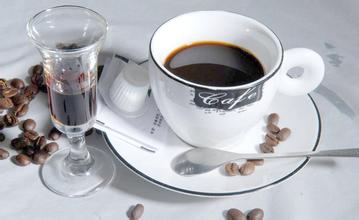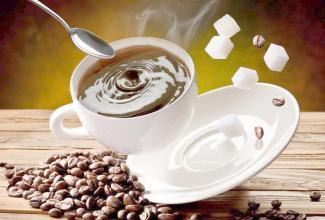Introduction to the varieties of Colombian Coffee beans produced by Grinding and Calibration
Introduction to the varieties of Colombian Coffee beans produced by Grinding and Calibration
Huila is located in southern Colombia, one of the well-known specialty coffee producing areas, with an altitude of about 1200 to 2020 meters, a planting area of more than 1.3 million hectares and an average temperature of 17 to 23 °C. Because of its outstanding flavor and aroma, it has become a world-famous special coffee. Medium-high acidity and moderate mellowness, charming sweetness and lemon wine acid, balanced and pure aftertaste, it is often selected by major coffee competitions in recent years.
The main varieties of Colombian coffee are small grains of coffee. Plants are small trees or large shrubs, 5-8 m tall, usually much branched at base; old branches gray-white, nodes dilated, young branches glabrous, compressed. Leaves thinly leathery, ovate-lanceolate or lanceolate, 6-14 cm long and 3.5-5 cm wide, apex long acuminate, acuminate part 10-15 mm long, base cuneate or slightly obtuse, rarely rounded, entire or shallowly wavy, both surfaces glabrous, lower vein axils with or without small pores; midrib raised on both surfaces of leaf, 7-13 on each side of lateral veins; petiole 8-15 mm long Stipules broadly triangular, arising from the tip of the upper part of the young branch conical or awn tip, the tip of the old branch is often protruding tip, 3-6 mm long. Cymes several clustered in leaf axils, each with 2-5 flowers, without a total pedicel or with a very short peduncle; flowers fragrant, with pedicels 0.5-1 mm long
The pure taste of Colombian coffee comes from Colombia's natural environment with the most favorable conditions for coffee growth. But beyond that, it is inseparable from the hard work of local growers. In Colombia, coffee cultivation has reached 1.07 million hectares, there are about 302000 coffee plantations in the country, and 30 to 40 per cent of the rural population depends directly on coffee production. Although there are many farms in Colombia, they are not large in area. The area of each farm is only about 2 hectares, and more than 80% of the coffee plantations have only about 5000 coffee trees, an average of 3000. Thus it can be seen that agriculture in Colombia belongs to the small-scale farm type. The locals plant tall trees or banana trees around the coffee trees. Build an Arbor for coffee trees at the seedling stage to ensure the cool and humid environment needed for coffee growth. Due to the high humidity, small temperature difference and slow ripening of coffee beans in the coffee forest, which is conducive to the accumulation of caffeine and aromatic substances, the quality of coffee is the best.

Important Notice :
前街咖啡 FrontStreet Coffee has moved to new addredd:
FrontStreet Coffee Address: 315,Donghua East Road,GuangZhou
Tel:020 38364473
- Prev

Description of Flavor of High-quality Coffee beans in different places introduction of Grinding scale Manor in production area
Local Flavor description of Fine Coffee beans Flavor processing area Grinding scale Manors introduce other kinds of Brazilian coffee, such as Rio and Parana, which can be produced in large quantities because they do not need too much care. Although the taste is rough, it is a kind of coffee with good quality and low price. Because it is distributed all over the country and its solid quality varies, it has its own standard (N according to the number of sundries).
- Next

Sitama Sunburn G1 Taste Chart-Sunburn Yesha Taste
Sitama G1 Taste Chart-Sun-Sunned Yoga Sitama Taste [Sun-Sunned Sitama]: The beans are smaller than Longberry, green and yellow. In the sun-drying field of Sitama, the coffee is placed in a hemp net rack. Workers take turns to stir the coffee manually under the sun. Sun-Sunned Sitama is usually labeled as G4. The washed Sitama is finished due to the more sun-exposed processing process.
Related
- Detailed explanation of Jadeite planting Land in Panamanian Jadeite Manor introduction to the grading system of Jadeite competitive bidding, Red bid, Green bid and Rose Summer
- Story of Coffee planting in Brenka region of Costa Rica Stonehenge Manor anaerobic heavy honey treatment of flavor mouth
- What's on the barrel of Blue Mountain Coffee beans?
- Can American coffee also pull flowers? How to use hot American style to pull out a good-looking pattern?
- Can you make a cold extract with coffee beans? What is the right proportion for cold-extracted coffee formula?
- Indonesian PWN Gold Mandrine Coffee Origin Features Flavor How to Chong? Mandolin coffee is American.
- A brief introduction to the flavor characteristics of Brazilian yellow bourbon coffee beans
- What is the effect of different water quality on the flavor of cold-extracted coffee? What kind of water is best for brewing coffee?
- Why do you think of Rose Summer whenever you mention Panamanian coffee?
- Introduction to the characteristics of authentic blue mountain coffee bean producing areas? What is the CIB Coffee Authority in Jamaica?

